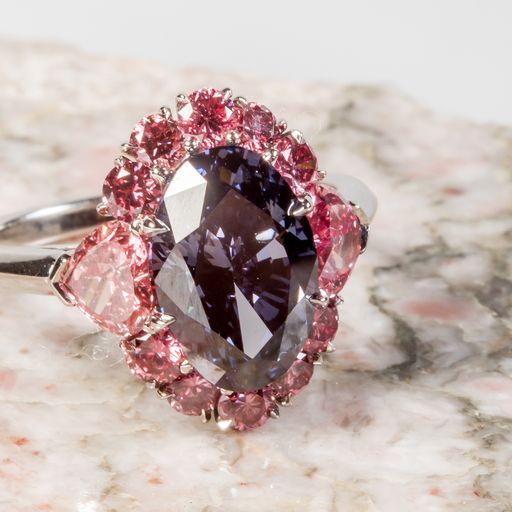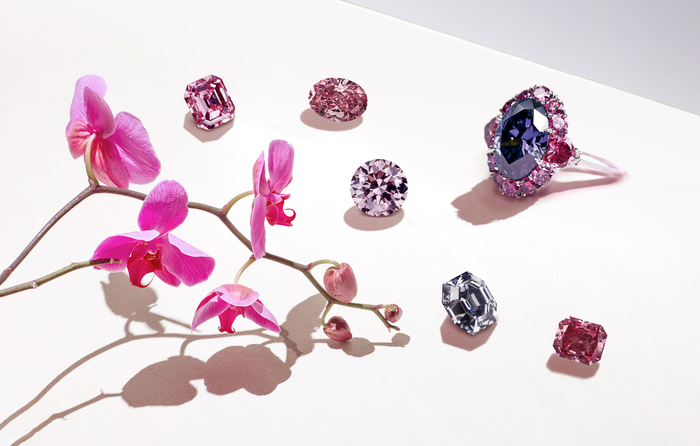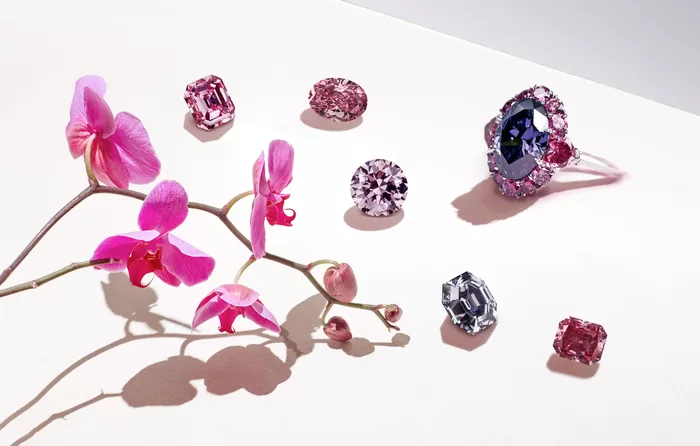The largest collection of Australian pink diamonds to be shown in the world will transform the Dynamic Earth gallery at Melbourne Museum into a shimmering wonderland from 5 Nov 2022–29 January 2023.
For the first time, a collection of some of the world’s most exquisite Australian pink diamonds – which make up 90% of all pink diamonds in the global market – will be on public display, including the 2.83 carat Argyle Violet, one of the most spectacular gems on Earth.
The Argyle Violet diamond is “one of the rarest jewels in the world, 100 times rarer than a pink diamond – it’s the Picasso of the collection”
Larry West from LJ West Diamonds said
Placed in the Natural History Museum in Los Angeles in 2016, it is the only stone in history to carry this colour grading which is produced by the presence of hydrogen.
The Argyle Violet was polished in Western Australia by one of Argyle’s master polishers, Richard How Kim Kam, from a 9.17 carat rough diamond discovered in 2015.
The Argyle Violet was assessed by the Gemological Institute of America (GIA) as a notable diamond with the colour grade of Fancy Deep Greyish Bluish Violet.


More than 90 per cent of the world’s rare pink diamonds come from the Argyle mine in Western Australia and it is the only source of hydrogen- rich violet diamonds.
Museums Victoria is partnering with Larry West of New York based LJ West Diamonds, one of the largest collectors of natural colour diamonds in the world, to provide an exclusive opportunity for Australians and international visitors to marvel at pink diamonds.
“I have been building my collection of Argyle pink diamonds for 30 years, many of which have never been on public display”
“I am thrilled for the best of the collection to be back in Australia and presented as the largest pink diamond exhibition ever.”
Larry West said
The Pink Diamonds exhibition will showcase more than 100 truly unique gemstones found in the Australian East Kimberley region.
Naturally coloured diamonds have long been valued for their uniqueness; coveted by many but owned by few. The physical conditions needed to create them occur very rarely, making them extraordinarily precious and exceedingly valuable.
In the world of luxury products, natural colour diamonds are likened to works of art, hidden treasures and rare books.
“Museums Victoria is pleased to present this world-first display of some of the earth’s extraordinary beauties”
“The exhibition will bring to light their dazzling hues, the fascinating science and the precise skill required to cut these exquisite gemstones”.
Museums Victoria Director & CEO Lynley Crosswell said
Museums Victoria Research Institute’s Head of Sciences Dermot Henry:
“Our planet created these flawless diamonds over 1.6 billion years ago. Finding a pink diamond is like retrieving the ‘needle from the haystack’; only one carat in every million will display this intense pink colour. They remind us how truly wonderful nature is.”
This once in a lifetime opportunity will allow audiences to discover what gives pink diamonds their distinctive colour, and the art behind cutting, polishing and setting diamonds as jewellery.
The Pink Diamonds exhibition has been supported through the Melbourne City Revitalisation Fund, a partnership between the Victorian Government and the City of Melbourne.
Pink Diamonds is showing at Melbourne Museum 5 Nov 2022 – 29 January 2023 and is free with Museum entry. Book tickets
Pink Diamond facts
All the Australian pink diamonds that have ever been sold can fit into two champagne flutes
Of every 1 million carats mined, 1 carat is a tender stone
Diamonds were formed 1.6 billion years ago
It can take up to a year to cut a perfect pink diamond.


Related stories
Colonel Blood’s plot to pinch the British Crown Jewels
Stolen Crown Jewels from the Royal Palace Dresden
How to Clean Pearls ° Cultured Pearl Types Explained





